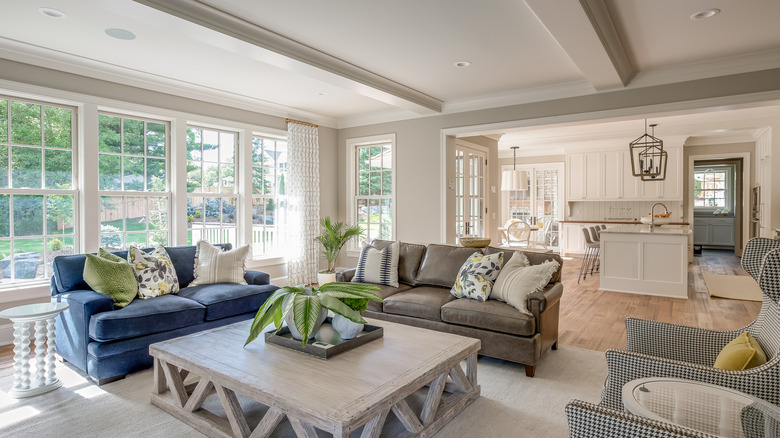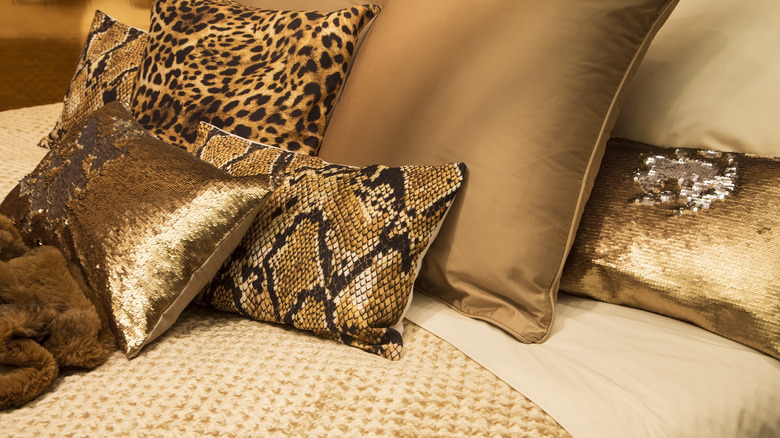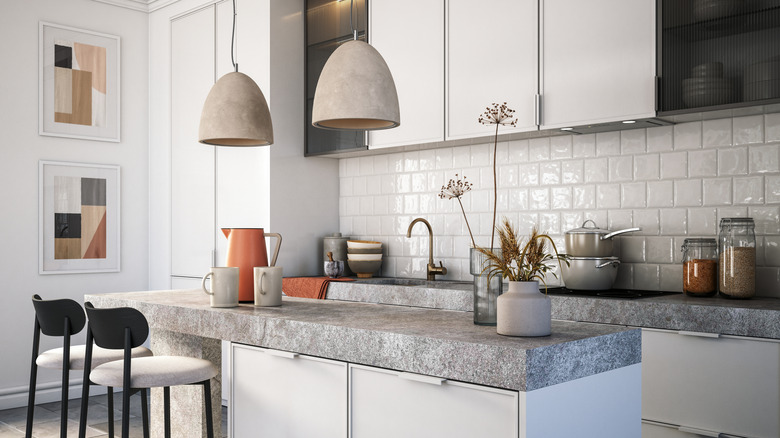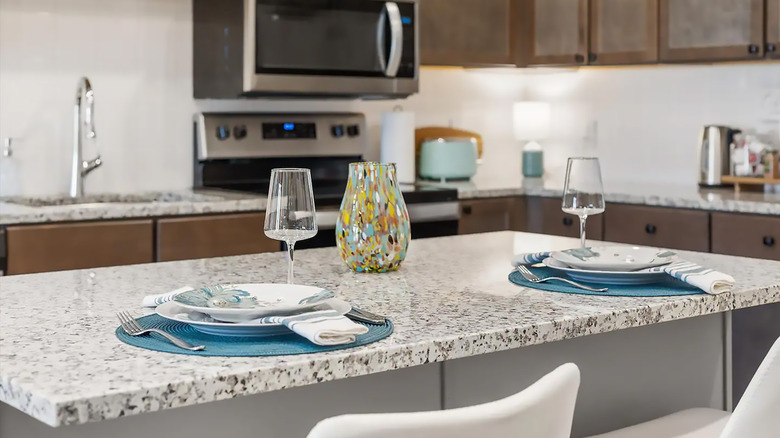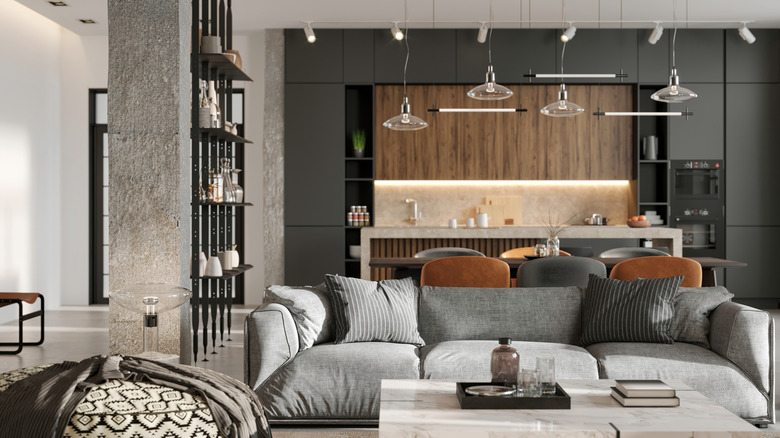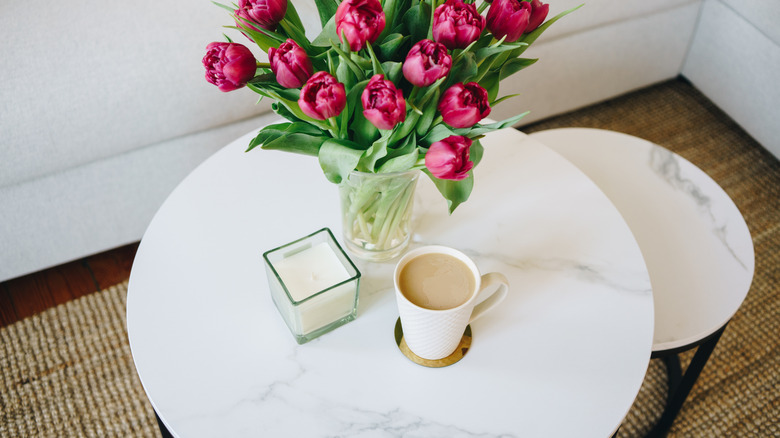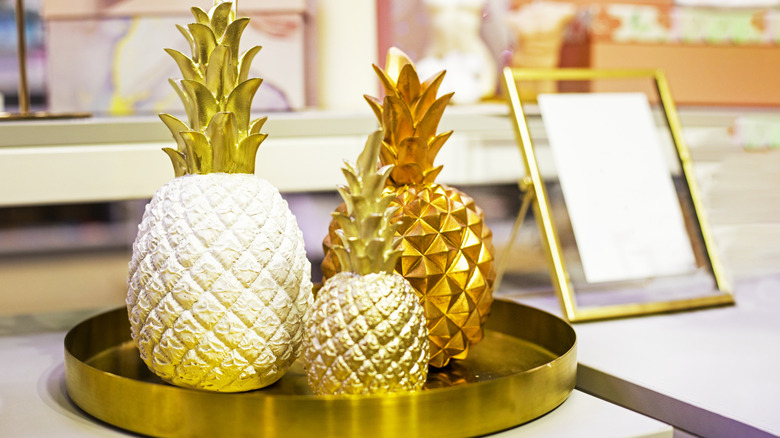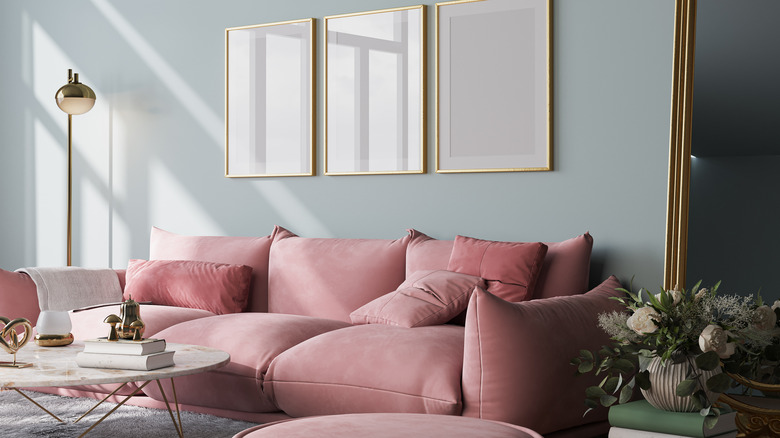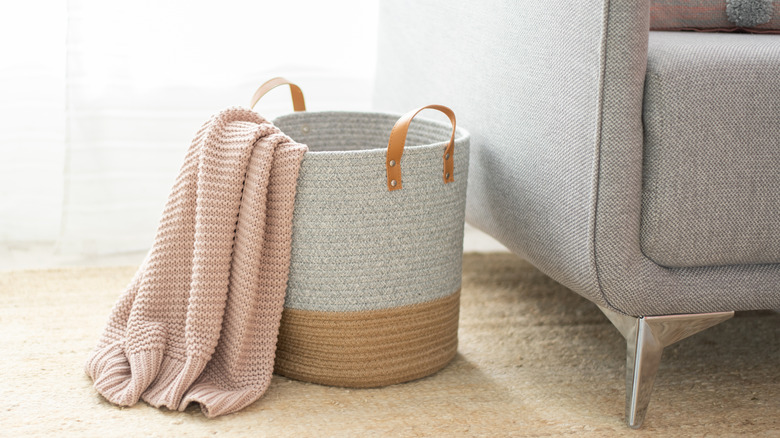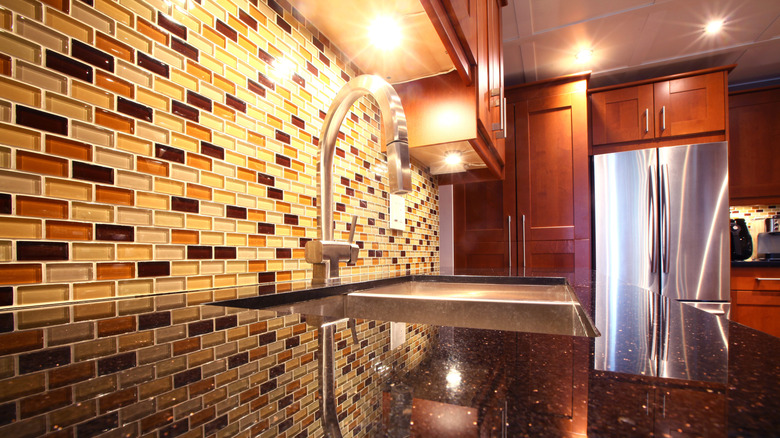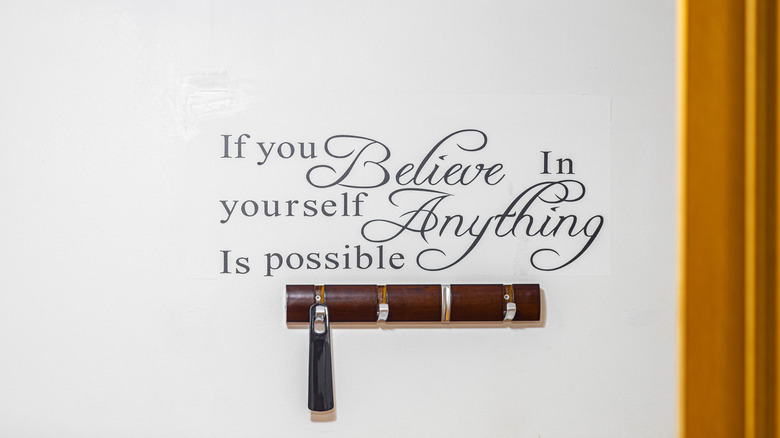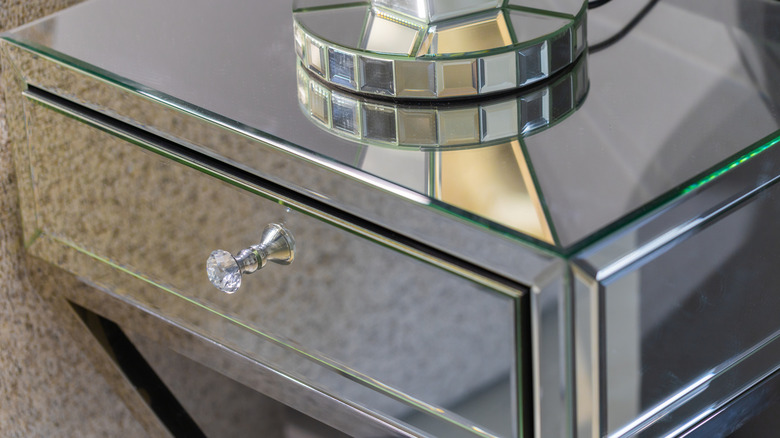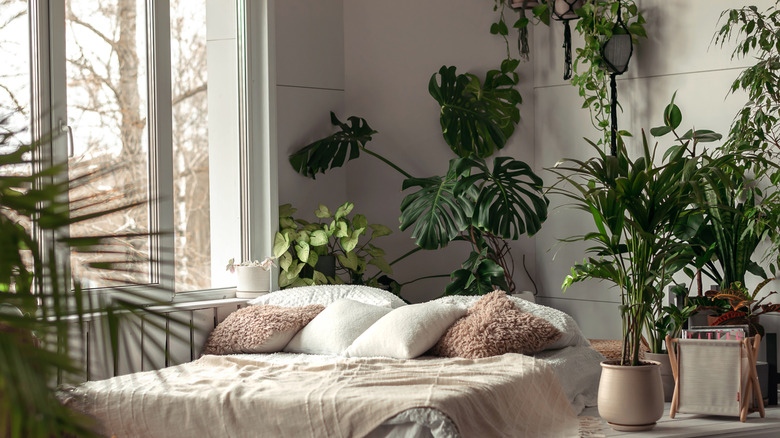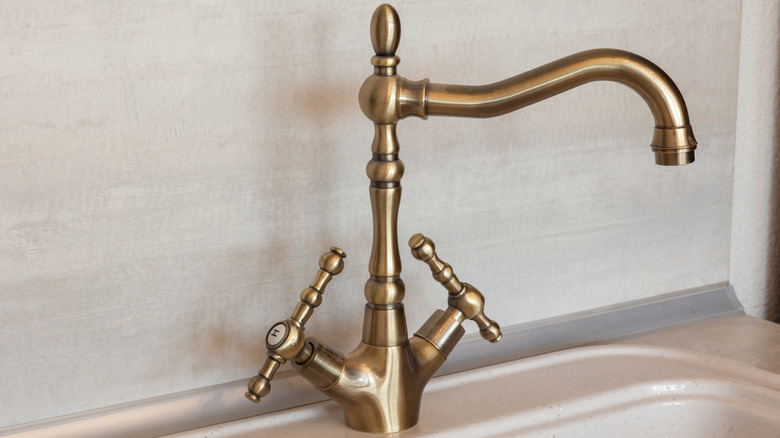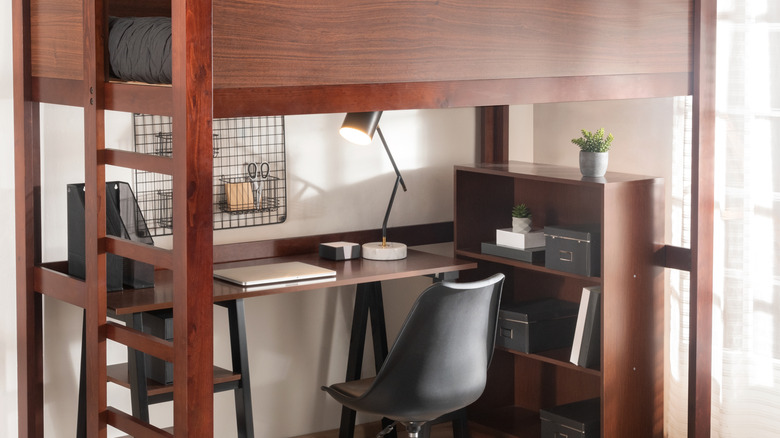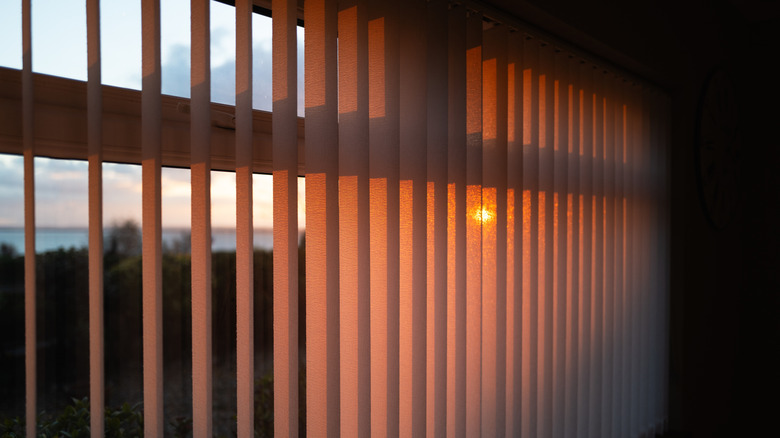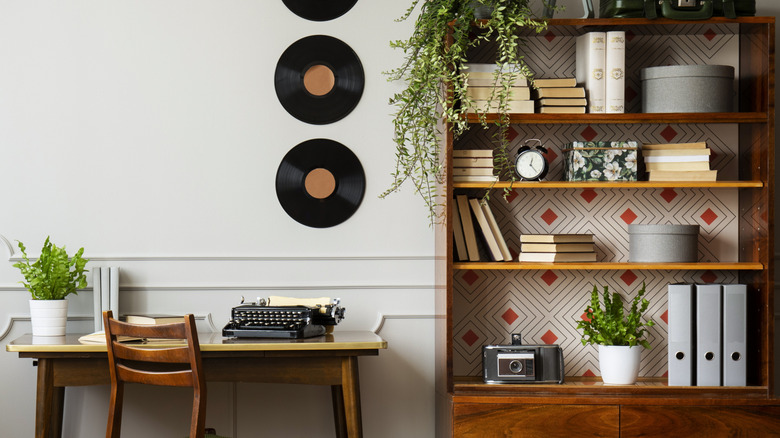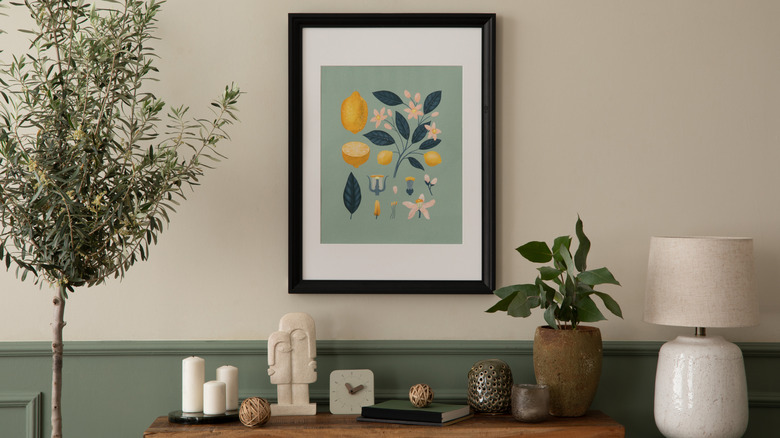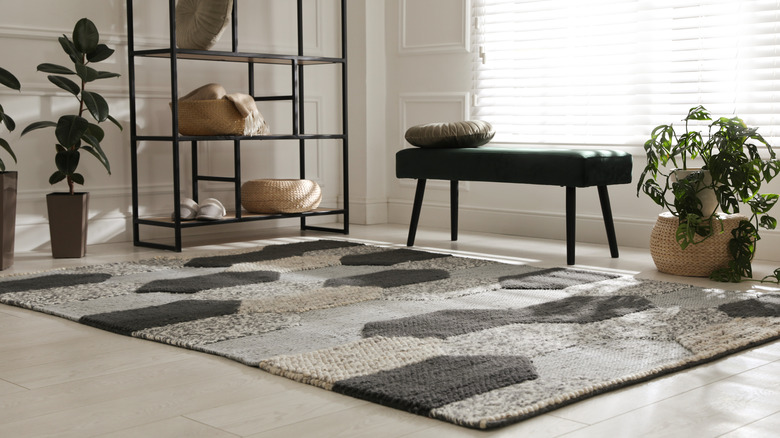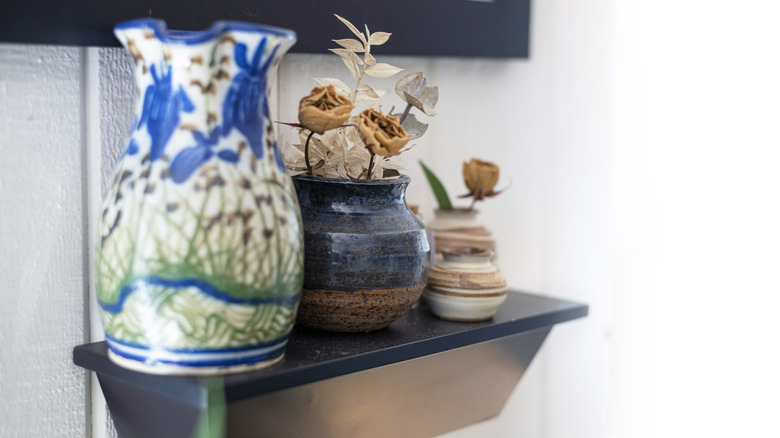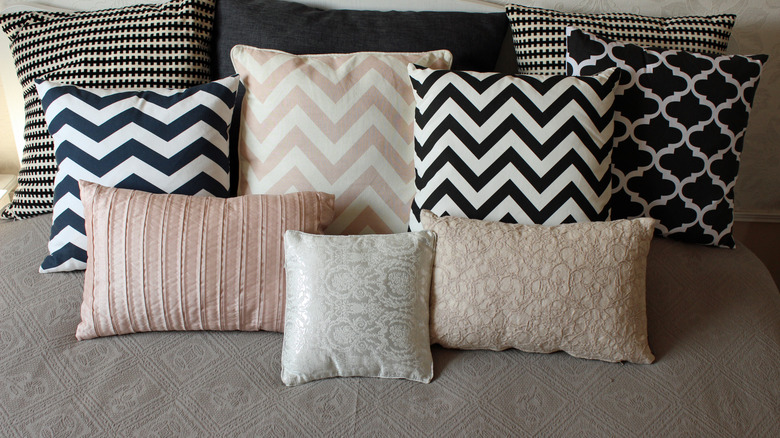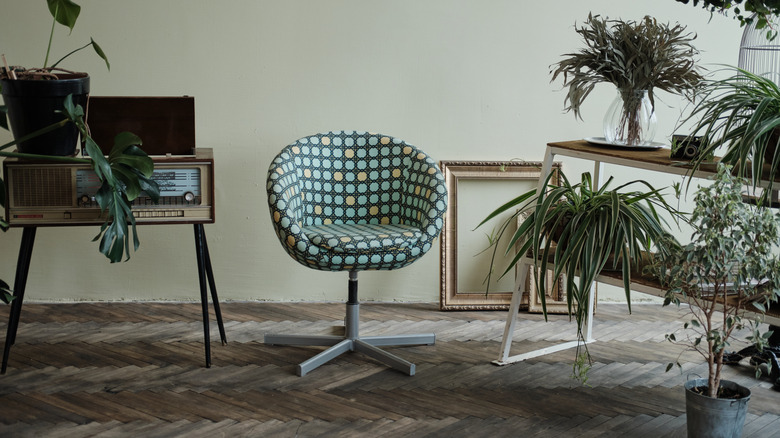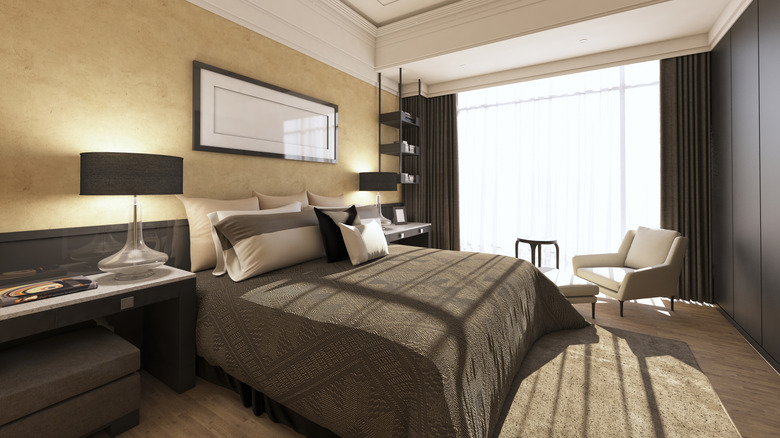22 Home Decor Trends Every Millennial Has Likely Had At One Point
Home interior design is constantly evolving. Trends and decor choices go hand-in-hand with differing tastes, personalities, generations, and even current events. Millennials are people who were born between the early 1980s and the mid-1990s. They straddle both the pre-internet and post-internet eras, giving them unique cultural influences to draw from. As such, they're comfortable mixing interior styles — from Victorian antiques to mid-century modern to contemporary 21st-century design. Nostalgia, minimalism, industrial chic, and boho have all had a place in millennial homes at one time or another. Some of the trends familiar to most millennials include marble accents, mosaic kitchen backsplashes, that pink paint shade that instantly dates your home, mirror-finish furniture, vintage fixtures, and pineapple-themed decor.
Broadly speaking, millennials tend to favor simple, less cluttered homes than previous and future generations. For example, a big difference between Gen Z and millennial home decor trends is that the latter prefer minimalist or pastel colors, while the former go for brighter hues. Since they currently make up the largest adult generation, how they have decorated — and continue to decorate — their homes is influential. At any one time, Millennials have enjoyed painting their walls in neutral colors, mixing and matching vintage and contemporary decor, and multifunctionality in furniture and fixtures.
Animal prints
Animal print is one of those tricky decor choices millennials embraced at one point and are largely tired of today. The wrong application leaves your home looking more like a zoo than somewhere to relax. Still want to jump on this arguably outdated trend? Stick to a single (faux, of course) species within your space and use it as an accent only. Instead of a sofa covered entirely in a cheetah print, throw an animal print blanket over the back of your couch or use one or two snake-skin pillows on the bed.
White kitchens
While white kitchens seem to be falling out of favor these days, they are undeniably a classic millennial design choice. They have their benefits, too — going all-white arguably makes the space feel bigger and more inviting. If you embraced the trend back in the day and want to upgrade your kitchen in a minimalist way, try layering in some cream, gray, or earth-toned accents. You may even want to lean into those Gen Z vibes with bold colored seating, appliances, and light fixtures.
Granite countertops
Granite countertops are a millennial hangover in many kitchens, but the generation's hearty embrace of the material is not without good reason. Granite is incredibly strong, heat resistant, and easy to maintain. No granite slab is the same either, adding a one-of-a-kind, nature-inspired element to any kitchen. These qualities make granite countertops a bonus in kitchen design. If you have one, think twice before ditching it, even if it feels outdated.
Gray color schemes
The term millennial gray exists due to the overwhelming use of monochromatic gray color schemes in the generation's homes, starting around the 2010s. And it's easy to see why it remained popular for so long. Gray is a versatile color that goes with practically any other hue. It's calming and clean, and you can use different shades of gray to add texture and layering to a space, making the color a little less boring than it first appears. Today, however, millennials appear to be ditching the hue in favor of bolder or moodier colors, especially green.
Marble accents and furniture
Another millennial home decor trend that is similar to granite kitchen countertops is the use of marble furniture and accents. Millennial homeowners had everything from marble (and faux marble-textured) accessories — think serving trays and soap dispensers — to marble coffee tables. Today, marble is still associated with sophistication and sleek, glossy home design. It looks elegant and fits into both modern and classically styled homes.
Pineapple-themed décor
Did you know that in 1700s Charleston, a pineapple in the front yard signaled to neighbors that you were entertaining? While we're unsure whether this had any influence on the millennial craze for pineapple decor, there could have been some nostalgia involved. Either way, the pineapple was a fun design statement that the generation embraced. Maybe you had a flashy gold pineapple cookie jar in the kitchen or adorned your living room windows with brass pineapple curtain tiebacks. Even today, you can still buy fruit-themed decals, like this Wall Pops Metallic Pineapple Wall Art Kit.
Pale pink furniture
Millennial pink emerged in the mid-2010s, and it's a home decor color trend that has evolved over time. While some say it has firmly gone out of style, there are still plenty of ways to decorate with millennial pink. People first loved the hue for the fresh yet cozy atmosphere it added to a home, and that's arguably still true today when it's used on furniture. For a little nostalgia, consider adding a blush pink sofa to your living room — it's surprisingly still trendy and even a bit posh.
Sustainable decor
Many millennial home decor purchases focused on sustainability — and arguably still do. Protecting the environment was (and, again, still is) seen as vital to a thriving future. This is reflected in their choice of furniture, fixtures, and accessories with sustainable features, like natural wood, stone, bamboo, and recyclable materials like glass or ceramic. To channel this latent trend today, purchase upcycled furniture, sustainable storage like these Kalakriti Woven Rope Baskets, or practical decor made from planet-friendly materials, like these Youlttan Diatomaceous Earth Coasters.
Mosaic tile backsplashes
Mosaic tile kitchen backsplashes are another uniquely millennial home decor trend. Big in the early 2010s, they came in glass, porcelain, or stone; there was a huge variety of tile materials, colors, and patterns to choose from. You could also choose different tile sizes and shapes depending on your personal preference. Hexagon tile backsplashes, anyone? They were beloved for their artsy vibe and ability to create a statement in the kitchen, but are now considered busy and cluttered-looking.
Word art on the wall
Millennials were passionate about turning carefully curated words and phrases — from Bible verses to inspirational sayings, like these Sinekong Inspirational Quote Wall Stickers — into wall art in the 2000s and again in the 2010s. Word decals and framed typography prints were particularly beloved by anyone channeling a modern farmhouse aesthetic. Today, word art can still be charming, so long as you keep it subtle, use cool fonts, and avoid clichés. Lean heavily into self-expression to make it meaningful.
Mirror-finish furniture
Mirrored furniture is a millennial design trend that was once considered luxe, but that most people feel is out of style today. In fact, the trend first emerged in the 1980s, and millennials brought it back in an attempt to channel a modern mid-century vibe. One of its key features was that it helped to open up smaller spaces, with the reflective surfaces acting as a visual illusion. Homes with a more futuristic or contemporary design style may still benefit from adding a little mirrored home decor. Try mixing it with traditional furniture and fixtures.
An indoor greenhouse
The bohemian aesthetic was a popular with millennials, and no earthy, naturalistic retreat was complete without houseplants. If you couldn't afford to overhaul your home design or lived in a rental, you could still turn your home into an indoor greenhouse. It added life to a space, brought the natural world indoors, and gave largely child-free young millennials something to care for. Incorporating plants into home decor was (and still is) easy: use decorative pots, plant stands, or hang plants from the ceiling. Give them natural light, water, and fertilizer to keep them healthy.
Brass accents
Brass accents were a key design choice for millennials trying to create luxe home interiors. The material, which they believed added a touch of sophistication to a room, featured on everything from lighting fixtures to bathroom faucets to brass canisters on a kitchen counter. Once again, the metal was championed by those channeling modern farmhouse in their homes. There's no denying that brass is a versatile metal that works well with most other metals and materials. It also comes in different colors. Today, however, it's largely being replaced by silver and chrome.
Multifunctional furniture and fixtures
Going hand in hand with the desire for a more sustainable lifestyle, millennials have long enjoyed decor and furniture that serves more than one purpose. That might be a floor lamp that doubles as a side table, for example, or this Tiptiper Folding Dining Table that allows a homeowner or renter to maximize space but still have a place to entertain. The trend also applies to the home itself — think of millennial dining rooms being used as home offices. It was (and still is) a stylish and practical way to save space and money.
Vertical blinds
While millennials may not have loved vertical blinds, many had to live in homes that had them. Popular in the 1980s and 1990s, these blinds are a boomer hangover that especially older millennials will be familiar with, whether they like them or not. They break easily, blow in the wind, and look old-fashioned. And, of course, notoriously pet-loving millennials quickly found vertical blinds incompatible with their furry housemates. Surprisingly, though, these blinds do have some merit outside of nostalgia: the vertical design of the louvers naturally repels dust, and they're easy to adapt to any window height or width.
Vintage and antique decor
Farmhouse chic has been a popular design choice since its earliest hints in the 2000s. The rise of the aesthetic ignited a passion in millennials for displaying vintage and antique decor in their homes that continues to this day. Perhaps as a reaction to the cluttered homes they grew up in, millennials love the idea of adding a few old-timey pieces as a visual embodiment of their personality. If you want to channel this aesthetic today, mix and match modern with vintage — adding, for example, a rustic thrifted coffee table to a sleek living room.
Sophisticated sage green
As mentioned, millennial gray is slowly being replaced in this generation's design scheme by another calming color: sage green. It's a hue that evokes feelings of nature and a spa-like peacefulness. Step inside a modern millennial's home and you might see a sage green bathroom vanity backsplash, living room accent wall, wood paneling that covers up unsightly piping, or tinted concrete flooring. You can even get sage green artwork that promotes serenity.
Area rugs
Hardwood flooring is a big millennial design element, and nothing better complements this type of flooring than an area rug. Large decorative rugs bring a sense of comfort to a room and are a stylish way to break up bland flooring. People of this generation tend to stick with environmentally friendly materials, including jute, sisal, wool, and cotton, and nature-inspired motifs — think forest creatures and earthy tones. If you love your area rug but still want to keep up with the times, upgrade to something with bold colors and powerful patterns.
Bohemian and handmade decor
Despite its 19th-century origins, bohemian style is today considered a wholly millennial trend; they embraced it as an expression of individuality and an abandonment of conventional norms. Millennials enthusiastically collected boho home decor, like handmade pottery, wood sculptures, and colorful artwork. However, they displayed it on shelves and in their kitchens without the clutter of past generations. If you want to try out this style today, it's best to incorporate just a few bohemian elements into a modern design.
Chevron prints
Chevron prints were quite literally everywhere in 2010s millennial homes, with use of the pattern peaking in about 2014. On a small scale, there were chevron-patterned throw pillows for your couch and shades for your lamp. On a much larger scale, everything from huge living room rugs to entire walls were adorned with the familiar stripes. It's easy to argue that the millennial love for chevron is out of date, but it can still be used in home decor today without being overpowering. Add in small chevron-adorned decor elements, for example.
Retro-style furniture
Retro furniture has long been popular with millennials, even being preferred over fast furniture. It aligns with the millennial love of fun, bold patterns like those found in boho interior design. The appeal of the retro furniture lines up neatly with the millennial desire for uniqueness and their obsession with sustainability. If you want to channel this trend in your home today, consider adding retro or mid-century pieces into your existing interior — like pairing so-called anti-design bright plastic stackable chairs with a chrome-edged dining table.
Dark, moody furniture
Millennials tried to create warm and inviting environments with their home decor choices without adding visual clutter. While they preferred light, airy open floor plans, they were often stuck with dark, moody hand-me-down furniture pieces from earlier eras. They made the best of it, pairing deep-hued furniture with neutral-colored blankets and throw pillows in the living room. Today, you can channel what's now dubbed dark grand millennial design in, for instance, your bedroom by installing dark curtains and a nightstand made of rich-colored wood.
